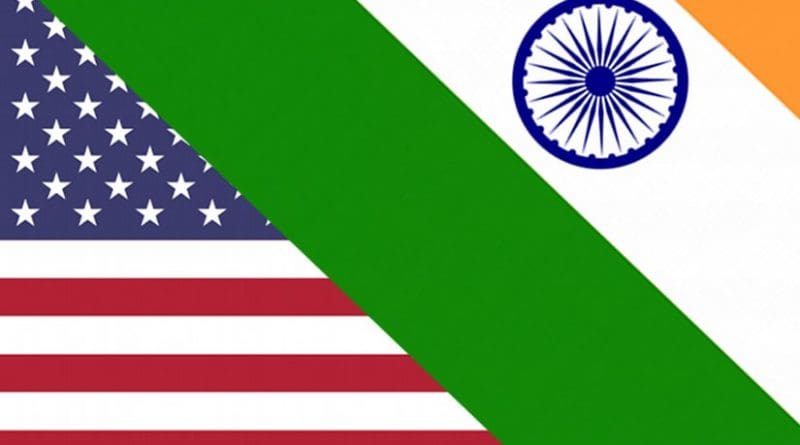Can India And US Be Partners In Afghanistan? – Analysis
By Dr. Shanthie Mariet D Souza
As US Secretary of State Hillary Rodham Clinton arrived in New Delhi for the second round of Indo-US strategic dialogue beginning on July 19, the deteriorating regional security environment is bound to hang heavy in the discussions. In a neighborhood of failing and fragile states, a democratic and stable India with tremendous economic growth trajectory is surely a country the US would like to partner with.
While bilateral trade and defense issues would be discussed, the focus will be on counter-terrorism and Afghanistan. In the wake of July 13 Mumbai terror attacks and the frayed US-Pakistan relations, discussions on evolving security challenges in the region are expected to be high on the agenda. The US has committed to be “as responsive as it can be” to this “important relationship with India with regard to cooperation in counter-terrorism and security concerns.”
With the beginning of draw down of its forces from Afghanistan, the US looks toward India to partner in the actualizing the goal of transition in that country. Beyond 2014, US will maintain a residual presence of 20,000 to 30,000 troops in the joint facilities (strategic bases) conducting highly specialized counter-terrorism operations with the Afghan national security forces in charge of the counter insurgency duties. India will be looked upon to fill in the crucial role in the economic development and reconstruction of Afghanistan.
A decade back, as the US Afghan policy under the Bush administration relied on Pakistan for counter terrorism cooperation and opted to keep India out of the security realm, thus heeding to Pakistan sensitivities, India adopted an ideational role by reviving its historical, traditional, socio-cultural and civilizational linkages with Afghanistan. India supported the nascent democratic regime, seeing in it the best hope for preventing the return of chaos and ensuing conflict ‘spill over’.
India’s soft power approach, with emphasis on capacity building, has been well received and appreciated by the Afghans. By directing most of its aid through the Afghan government, India sought to build its legitimacy and credibility. Its small development projects in the south and the east of the country, areas marked by rising insecurity and shrinking humanitarian aid are implemented by the locals. As a result, Afghans have a sense of ownership of these projects.
India has provided assistance to women’s groups through self-employment generation schemes, health and capacity-building. Such schemes, operational in Kabul and the western province of Herat, are popular among local women groups, making them long-term stakeholders in rebuilding the country’s social and economic fabric.
Over the last decade, in the face of enormous difficulties and challenges, this “soft power” strategy has persisted. While the international community’s decade-long involvement has come under renewed scrutiny, the rationale behind India’s method of engagement is increasingly being understood and emulated.
India’s Afghan policy has even recognized the need of an Afghan-led and Afghan-owned peace process. On 14 July, New Delhi received the delegation led by Burhanudin Rabbani, head of Afghanistan government’s peace council negotiating with the Taliban. Rabbani is believed to have briefed India on the progress of the reconciliation process.
There has been a search of joint ventures with Indian programs and aid groups. While USAID wants to partner in the widely popular scholarship program and work with women’s groups, there are apprehensions among Indians regarding such association, which could lead to the projects being targeted or coming under suspicion in some regions.
India’s approach has complemented the counterinsurgency efforts (hold, build and transfer) and at the same time helped institution building and empowered local Afghans. Unlike other international donors, who have relied on their own agencies and subcontracting (thereby creating parallel structures of governance), most of India’s aid is currently channeled through the Afghan government and works in conjunction with local needs and priorities. Thus, the criticism of India’s “development only” approach described to be piggybacking on the military efforts of the US and NATO-led forces, is largely unsustainable.
India is also looking beyond Afghanistan, in terms of economic integration of South Asia and Central Asia. This is of great interest to the American policy makers as they grapple with the challenges posed by Pakistan. One way out of Af-Pak conundrum is to involve Pakistan in a regional cooperative framework, prodding it to give up its restrictive trade and transit agreements by highlighting the benefits that will flow into its economy.
Regional cooperation will be a critical component of ensuring cooperation among these countries in conflict. The neo-liberals in India strongly support this line of thinking. While that idea would be difficult to implement, the existing countries can swiftly transform themselves into becoming land bridges between South Asia with Central Asia and providing access to strategic energy resources. The existing mechanisms under the South Asian Association for Regional Cooperation (SAARC) would be useful in this context. The Turkmenistan-Afghanistan-Pakistan-India (TAPI) pipeline could be another such useful cooperative venture.
There are obvious broad congruence of goals among India and the US in Afghanistan, although the means to achieve them remain somewhat different. Secretary Clinton’s visit will have to focus in narrowing down these differences. To start with, India and US will have to come together in defining the end-state in Afghanistan.
Published first by Al Arabiya and reprinted with permission

